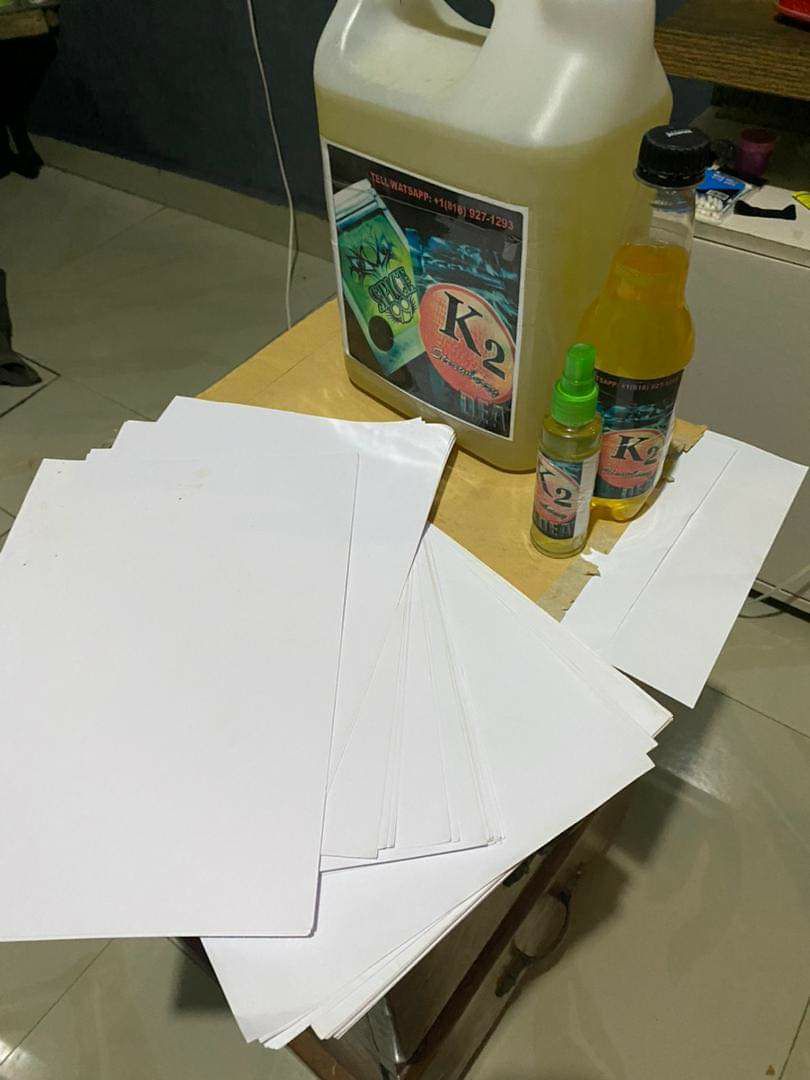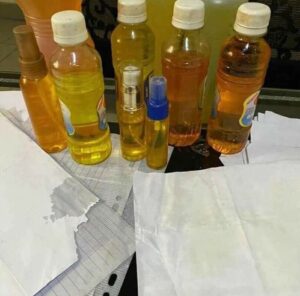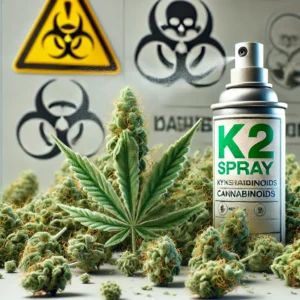In recent years, K2 paper sheets have emerged as one of the more controversial products in the world of synthetic drugs. Also known as Spice paper or synthetic cannabinoid-infused paper, K2 paper sheets contain synthetic compounds designed to mimic the effects of natural cannabis. These sheets are often soaked in liquid forms of K2 or other synthetic cannabinoids, making them convenient and discreet for users to consume in various ways. However, while these products may seem similar to natural cannabis, they come with a wide range of risks and dangers that make them far more harmful.
This guide will explore everything there is to know about K2 paper sheets, from their production process and legal status to the health risks associated with their use. We’ll also delve into the role K2 paper sheets play in certain environments, like prisons, where they have gained significant popularity.
2. The History and Evolution of K2
To understand K2 paper sheets, it’s essential to first understand the history of K2 and synthetic cannabinoids. The development of synthetic cannabinoids dates back to the 1980s when scientists were researching how cannabinoids interacted with the brain’s receptors. The goal was to create synthetic versions of cannabis compounds that could be used for medicinal purposes.
However, by the early 2000s, synthetic cannabinoids began to enter the illegal drug market. K2 (often referred to as Spice) was among the first synthetic cannabinoids to gain widespread attention. Initially marketed as a “legal high,” K2 was sold in gas stations, smoke shops, and online as an alternative to cannabis. Many people believed it was safer due to its legal status, but as reports of serious side effects and hospitalizations grew, governments around the world began to take notice.
Synthetic cannabinoids, including K2, became banned in many countries, but manufacturers continually altered the chemical composition to stay ahead of the law. This game of cat and mouse between manufacturers and regulators led to a constantly evolving landscape of synthetic drugs, of which K2 paper sheets are one of the latest iterations.

3. What Are K2 Paper Sheets?
K2 paper sheets are sheets of paper infused with synthetic cannabinoids. The cannabinoids are typically applied to the paper in a liquid form, which is then dried. Users can smoke, vape, or even ingest the paper to experience the effects of K2. These sheets are often used as a way to smuggle drugs into controlled environments, such as prisons, because they can be disguised as ordinary paper and are difficult to detect by authorities.
The synthetic cannabinoids found in K2 paper sheets are not the same as the cannabinoids in natural cannabis. They are often much stronger and have unpredictable effects. While K2 was initially marketed as a safer alternative to cannabis, it has since gained a reputation for being far more dangerous due to its potential for serious side effects and even death.
4. Production Process: How K2 Paper Sheets Are Made
The production of K2 paper sheets involves soaking or spraying synthetic cannabinoids onto regular sheets of paper. The process starts with liquid K2, which is usually created in underground labs by mixing various chemicals designed to mimic the effects of natural cannabinoids. These chemicals are dissolved in solvents, and then the liquid solution is either sprayed or applied to the paper.
After the paper has been saturated with the liquid K2, it is left to dry. The dried sheets are then cut into smaller pieces, which can be consumed by users in different ways. The potency of the paper depends on the concentration of the K2 in the solution and how thoroughly it is applied to the paper.
5. Different Varieties of K2 Paper Sheets
There are several different varieties of K2 paper sheets available on the black market, each differing in potency, chemical composition, and intended use. Some of the most common varieties include:
- Standard K2 Paper Sheets: These are basic sheets of paper that have been infused with synthetic cannabinoids and are designed for general consumption, often through smoking.
- Prison K2 Paper: This variety is specifically designed for smuggling into prisons, where drugs are harder to obtain. It is often disguised as letters, books, or other legal documents.
- Designer K2 Sheets: These are marketed as higher-quality or more potent versions of standard K2 paper. They may contain multiple synthetic compounds to enhance the effects.
The exact chemical composition of K2 paper sheets can vary widely depending on the manufacturer, which adds to the unpredictability of their effects.
6. Popular Uses of K2 Paper Sheets
K2 paper sheets have become popular in a few specific scenarios, largely because they are easy to conceal and use. Some of the most common uses include:
- In Prisons: K2 paper sheets are particularly popular in prison environments due to their discreet nature. Because they look like ordinary paper, they can be easily smuggled in letters, books, or other documents. Prisoners then smoke or consume the paper to experience the effects of the drug.
- For Recreational Use: Outside of prisons, some people use K2 paper sheets recreationally as a cheaper and more potent alternative to natural cannabis. Because synthetic cannabinoids are typically stronger than THC, the active compound in cannabis, users often seek out K2 for a more intense high.
- As a Cannabis Substitute: K2 is sometimes used by people who are subject to regular drug testing because it does not always show up on standard drug tests. This makes it appealing to individuals who want to use a psychoactive substance without the risk of detection.
7. The Legal Status of K2 and Synthetic Cannabinoids
The legal status of K2 and other synthetic cannabinoids varies by country and jurisdiction. In the early days of K2, it was often sold legally in gas stations and head shops because the chemical compounds it contained were not yet regulated. However, as the dangers of K2 became more apparent, governments around the world began to ban it.
In the United States, for example, the Synthetic Drug Abuse Prevention Act of 2012 classified many synthetic cannabinoids, including some compounds found in K2, as Schedule I substances, meaning they are considered to have a high potential for abuse and no accepted medical use. Despite these laws, manufacturers have continued to tweak the chemical formulas to create new versions of synthetic cannabinoids that are not covered by existing legislation.
In many other countries, including the UK, Australia, and Canada, synthetic cannabinoids like K2 are also illegal, with governments taking action to ban specific compounds as they emerge.
However, the legal status of K2 paper sheets is murkier. While the synthetic cannabinoids themselves may be illegal, the paper is often sold or distributed in a way that makes it difficult for law enforcement to regulate. This has contributed to the continued use of K2 paper sheets, especially in environments like prisons.
8. Health Risks and Effects of Using K2 Paper Sheets
One of the primary concerns surrounding K2 paper sheets is the health risks associated with their use. Unlike natural cannabis, which has been studied extensively for its health effects, synthetic cannabinoids are unpredictable and often much more potent. The risks include both short-term and long-term health effects.
Short-Term Effects
- Paranoia and Anxiety: Many users report experiencing intense feelings of paranoia, fear, and anxiety after using K2 paper sheets. These effects are often more pronounced than those associated with natural cannabis.
- Hallucinations: K2 can cause vivid hallucinations, which may be frightening or disorienting for the user.
- Severe Agitation: Users of K2 often become extremely agitated, which can lead to aggressive behavior or self-harm.
- Seizures: K2 has been known to trigger seizures, especially in people who have a history of epilepsy or other seizure disorders.
- Rapid Heart Rate: Many users experience a significant increase in heart rate after consuming K2, which can lead to heart attacks or other cardiovascular problems.
- Vomiting and Nausea: K2 often causes nausea and vomiting, which can contribute to dehydration and other complications.
Long-Term Effects
- Addiction: K2 is highly addictive, and many users develop a physical and psychological dependence on the drug. Quitting K2 can lead to withdrawal symptoms, including anxiety, irritability, and cravings.
- Organ Damage: Prolonged use of K2 can cause damage to vital organs, including the liver, kidneys, and heart.
- Cognitive Impairment: Chronic users of K2 may experience long-term cognitive impairment, including memory loss and difficulty concentrating.
- Psychosis: There is evidence that long-term use of K2 can lead to permanent changes in brain chemistry, resulting in psychosis or other mental health disorders.
9. How K2 Differs from Natural Cannabis
One of the most important distinctions between K2 paper sheets and natural cannabis is the difference in their chemical composition. Natural cannabis contains THC (tetrahydrocannabinol), which is the compound responsible for its psychoactive effects, as well as other cannabinoids like CBD (cannabidiol), which have therapeutic properties. The effects of cannabis are relatively well understood, and it has been used medicinally and recreationally for centuries.
In contrast, K2 contains synthetic cannabinoids, which are designed to mimic the effects of THC but are chemically different. These synthetic compounds bind to the same receptors in the brain as THC, but often with much greater intensity. This can lead to far more severe and unpredictable effects, including hallucinations, agitation, and seizures.
Furthermore, while natural cannabis is derived from a plant and contains a variety of compounds that interact in complex ways, K2 is a purely synthetic product, meaning it does not have the same balance of cannabinoids. This makes K2 far more dangerous, as there is no way to predict how the body will react to the synthetic compounds.
Table of Contents

10. K2 Paper Sheets and Their Popularity in Prisons
K2 paper sheets have gained particular notoriety for their use in prison environments. In many prisons, drugs are hard to come by, and inmates have found creative ways to smuggle substances into these controlled environments. K2 paper sheets have become a popular choice because they can be easily disguised as ordinary paper, making them difficult for prison authorities to detect.
Letters soaked in K2 are sent to inmates, who then either smoke the paper or ingest it in other ways. The effects of K2 in prisons can be devastating, leading to violent outbursts, medical emergencies, and even death. Prison officials have struggled to keep up with the influx of K2 paper sheets, and many prisons have implemented stricter measures to screen incoming mail in an effort to curb the problem.
11. Methods of Ingesting or Using K2 Paper Sheets
There are several ways in which users consume K2 paper sheets. Some of the most common methods include:
- Smoking: The most popular method of consuming K2 paper sheets is to smoke them. Users roll the paper into a cigarette or joint and light it, inhaling the smoke to experience the effects of the drug.
- Vaping: Some users vaporize K2 paper sheets by placing them in a vaporizer. This method is often considered less harmful than smoking, but the risks of K2 remain the same.
- Ingesting: In some cases, users may eat the paper to absorb the synthetic cannabinoids. This method is less common but can still lead to the desired effects.
12. Real-Life User Experiences: Positive and Negative
K2 paper sheets have produced a wide range of experiences, both positive and negative. While some users claim that K2 provides a more intense and euphoric high than natural cannabis, the negative experiences far outweigh the positives. Common negative experiences include intense paranoia, hallucinations, and physical health problems like seizures and heart palpitations.
Many users have also reported becoming addicted to K2, experiencing withdrawal symptoms when they try to stop using the drug. These symptoms often include severe anxiety, depression, and cravings.




